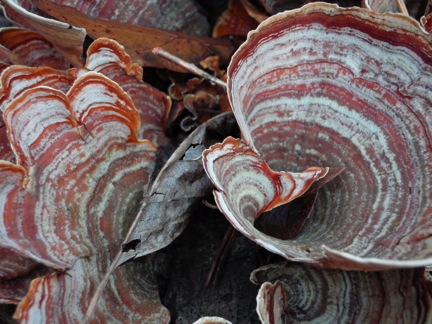Stereum sp.



Several look-alike species of mushrooms form what appear to be stacks of paper-thin discs on rotting logs, with each mushroom bearing a superficial resemblance to a colorful, banded turkey tail. It’s hard to identify them exactly without examining what’s under the mushroom, the place where the spores are produced.
Stereum species look quite smooth on the undersurface. Species of Trametes have faintly visible pores. Trichaptum biformis has visible pores that break up into tiny “teeth” with age. Even more dramatic are the blade-like gills of the thicker Lenzites betulina.
Some of these fungi cause what’s known as spalting in wood, a prized natural “defect” characterized by wild fungal pigments swirling across the wood grain. Wood crafters worship spalted lumber.
None of these fungi is edible. Of course, not everything in nature has to be edible in order to be appreciated.
TOP: Stereum sp.
BOTTOM: Lenzites betulina and Trichaptum biformis


